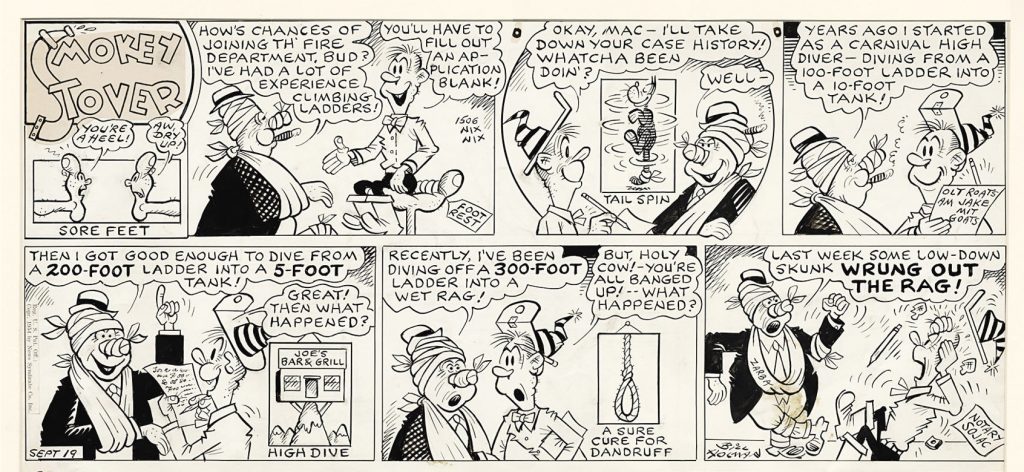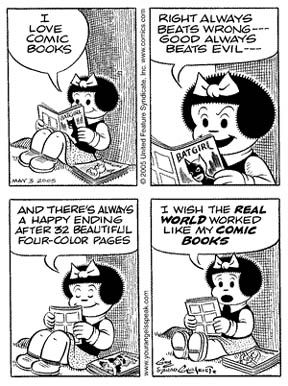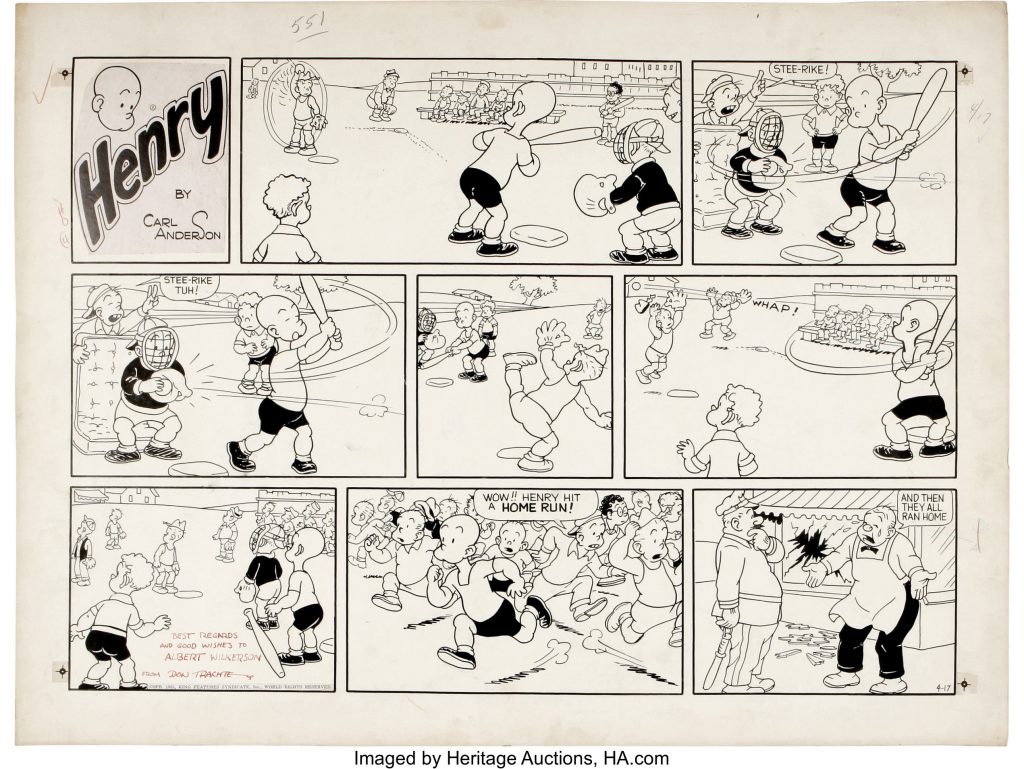
Dad makes almost daily references to comic strips like Smokey Stover which he enjoyed growing up. The other day Dad said “Cash U. Nutt” and then asked, “Do you remember Nancy?” I didn’t so I asked him to tell me about it. We looked it up on the internet and he was so excited to see the comic strip Nancy. We read a few and chuckled. Then he asked me if I remembered Henry. I didn’t. Dad said, “You youngsters can’t remember anything!”. Here are strips of Smokey, Nancy and Henry we found on the internet with Wikipedia excerpts describing each. I think we will make reading the “funnies” a daily activity. Enjoy!

“The puns and “silly pictures on the wall with various items hanging clear out of the frames” was the feature that provoked the most reader mail, according to articles and interviews with Holman. The cartoonist often visited the syndicate office to pick up the puns which readers suggested for the walls. He called these items “wallnuts”. For example, a picture of a fish opening a door is labeled “calling cod”.[2] The panels of Smokey Stover regularly include sight gags, mishaps, absurd vehicles, and bizarre household items, including oddly shaped furniture, clocks, vases, headwear, cigarette holders, and telephones. Framed pictures on the walls change completely from panel to panel or feature the subjects literally jumping out of the frames. The strip also abounds in nonsensical dialogue, non-sequiturs, and puns.”

“Comics theorist Scott McCloud described the essence of Nancy: Ernie Bushmiller’s comic strip Nancy is a landmark achievement: A comic so simply drawn it can be reduced to the size of a postage stamp and still be legible; an approach so formulaic as to become the very definition of the “gag-strip”; a sense of humor so obscure, so mute, so without malice as to allow faithful readers to march through whole decades of art and story without ever once cracking a smile. Nancy is Plato’s playground. Ernie Bushmiller didn’t draw A tree, A house, A car. Oh, no. Ernie Bushmiller drew the tree, the house, the car. Much has been made of the “three rocks.” Art Spiegelman explains how a drawing of three rocks in a background scene was Ernie’s way of showing us there were some rocks in the background. It was always three. Why? Because two rocks wouldn’t be “some rocks.” Two rocks would be a pair of rocks. And four rocks was unacceptable because four rocks would indicate “some rocks” but it would be one rock more than was necessary to convey the idea of “some rocks.” A Nancy panel is an irreduceable concept, an atom, and the comic strip is a molecule.[18]
Cartoonist Wally Wood described Nancy‘s design more succinctly: “By the time you decided not to read it, you already had.”[19]“

“Art Baxter analyzed the appeal of the character and the strip: Henry was a strip that was supposed to be contemporary, but it never looked that way. There were almost no modern trappings. There may be cars or telephones, but that’s about it. It always seemed like Henry could always find the coal wagon, horse-drawn ice delivery or a five-cent ice cream cone. There were always shadings of nostalgia in the strip, even when it began in the Depression. Part of that has to do with the fact that Henry’s creator, Carl Anderson, was already an old man in his late sixties when he created the character by accident. Henry is autonomous in The Saturday Evening Post strips. Henry would not pick up a regular cast of characters, all with no proper names, only titles: the mother, the dog, the bully, the little girl, until it became a William Randolph Hearst comic strip. The Saturday Evening Post Henry is similar in many ways to the Little Rascals/Our Gang comedies of the same era. That is children free from the tyranny of an adult presence (mostly): children navigating the world as best they can with the knowledge and experience they currently possess; sometimes getting things right, often getting things wrong, and frequently coming up with solutions to problems unique to their limited experience. Necessity is the mother of invention with funny, surprising results.[4] Later strips of Henry would be somewhat a reversal of earlier themes, such as adults having the last word when Henry and his friends misbehave, or Henry walking around town to see free samples of common household items, then seeing another sign advertising ice cream for expensive prices, to his unspoken consternation.”
